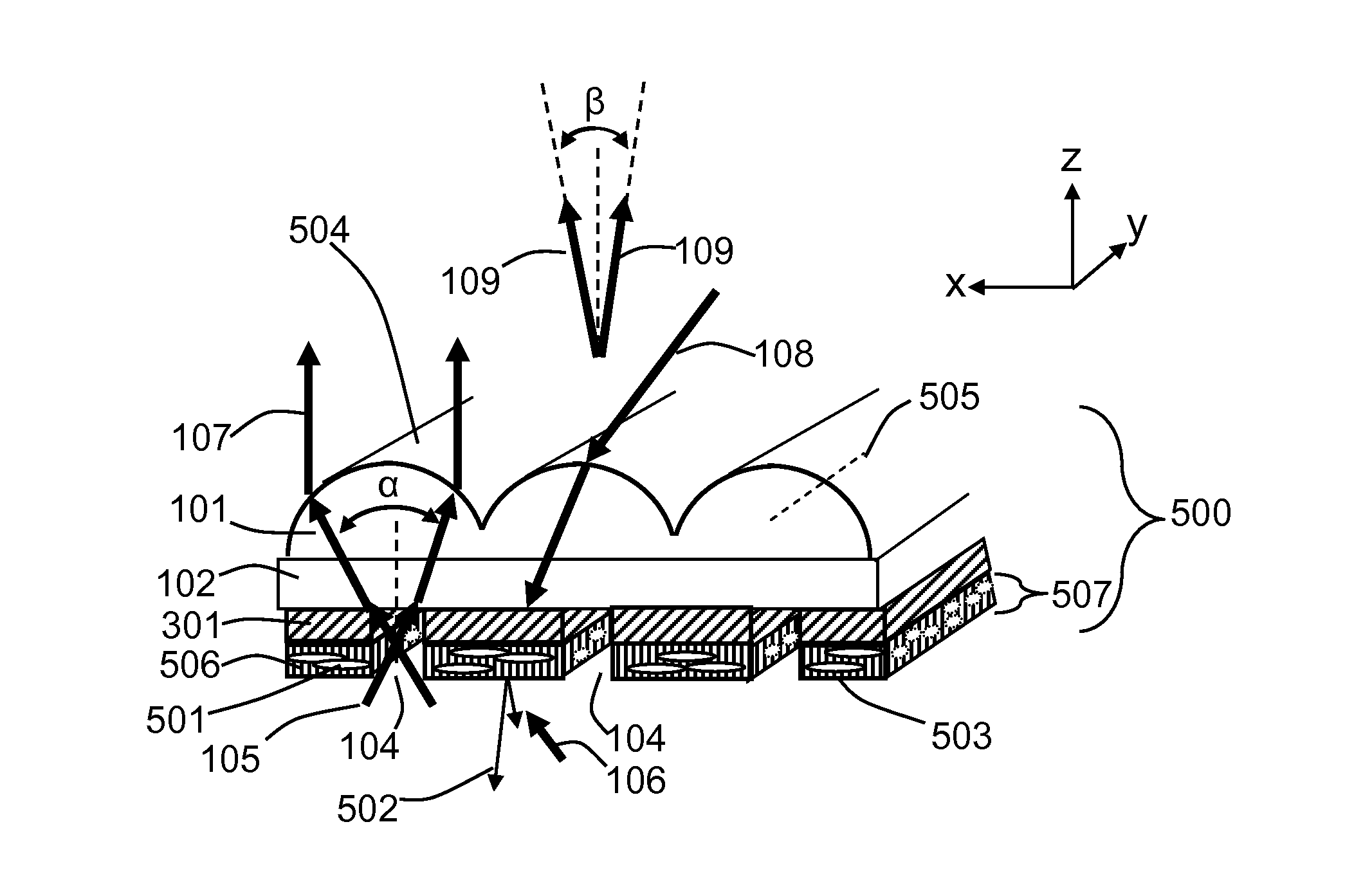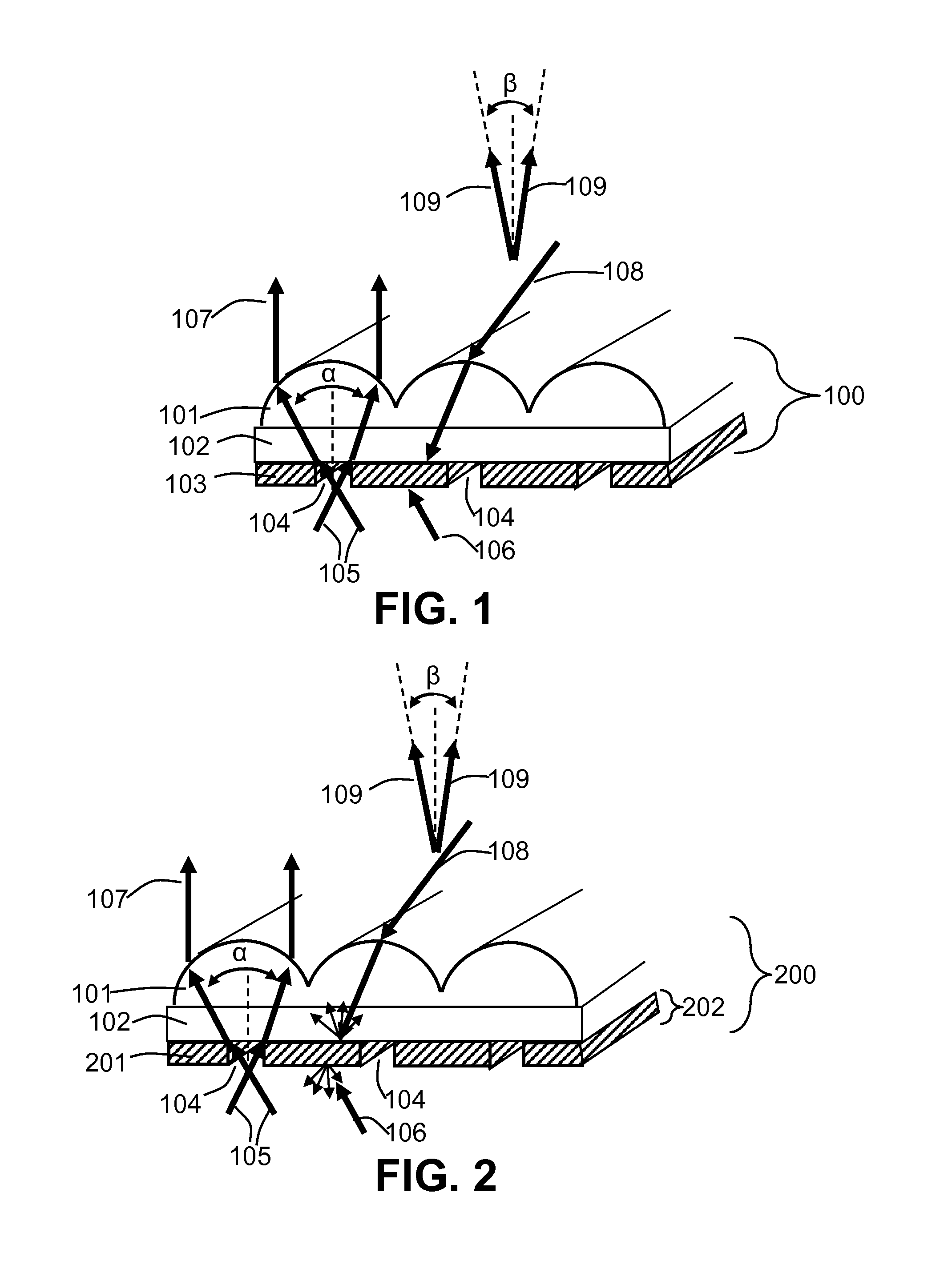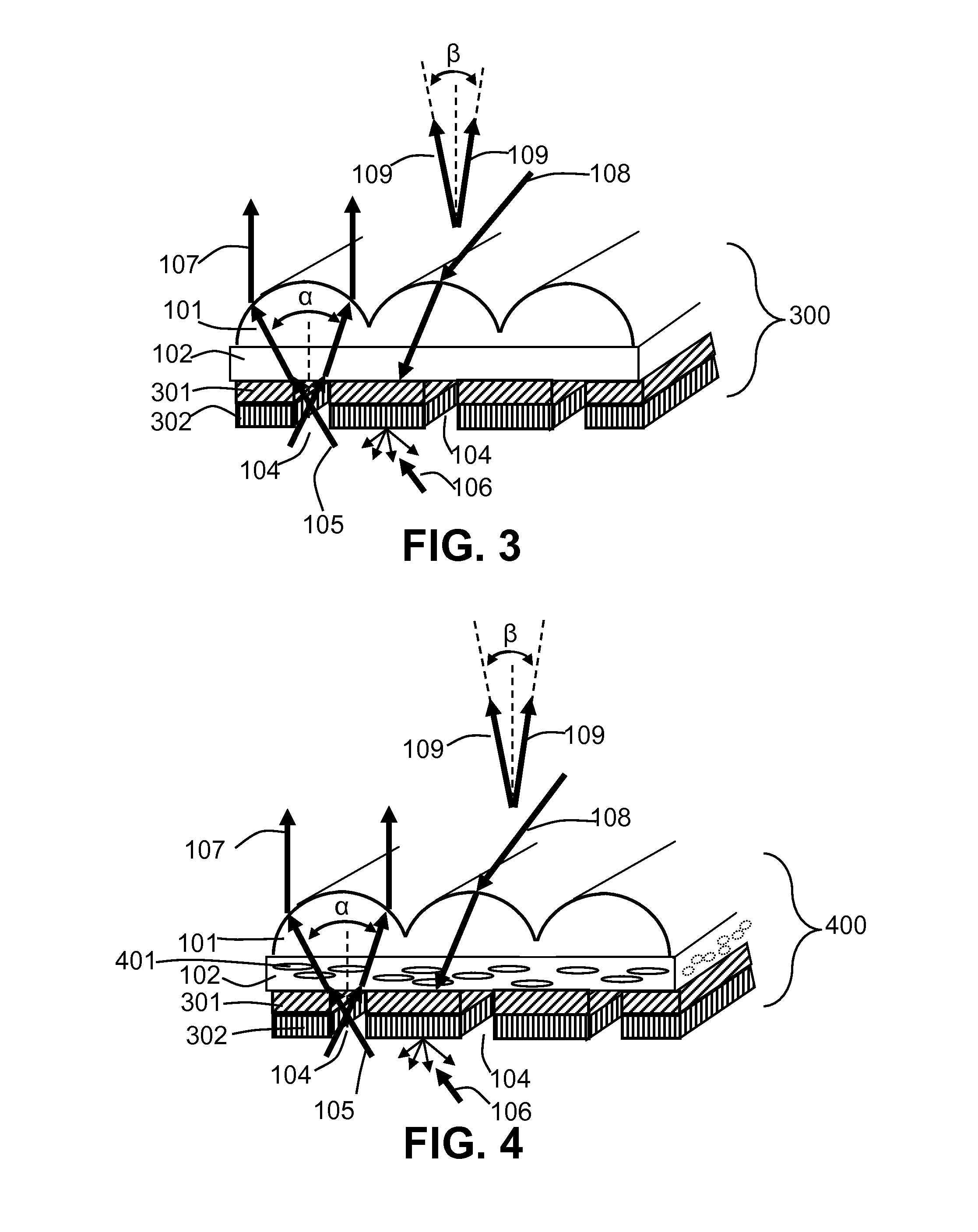Light recycling directional control element and light emitting device using the same
a technology of directional control and light emitting device, applied in the field of optical elements, can solve the problems of limitations of traditional prismatic collimation film in their ability to highly collimate incident light, and achieve the effect of increasing spatial color or luminance uniformity
- Summary
- Abstract
- Description
- Claims
- Application Information
AI Technical Summary
Benefits of technology
Problems solved by technology
Method used
Image
Examples
example 1
[0169]An optical element is made from a 187 micron lenticular lens array film printed on the flat side with linear array of white lines using a laser transfer process. The white lines were aligned substantially parallel to the lenticules and in the regions directly beneath the apex of the lenticules. The white lines are approximately 100 μm wide with a pitch of approximately 187 μm. The optical element is positioned above an edge-lit waveguide with light extraction features and a white PET-based reflector on the opposite side. The light output from the resulting light emitting device has far-field peak illuminance angles greater than 30 degrees from the normal.
example 2
[0170]An optical element is made from a 187 micron lenticular lens array film laminated with Cromalin light sensitive film from DuPont Inc. Collimated UV light from a 1 kW Tamarack UV exposure system is directed to the lenticular film at angle of 15 degrees from the normal to the film such that the light passes through the lenticular elements and exposes the Cromalin light sensitive film. The protective cover is removed from the Cromalin and white titanium dioxide powder is then applied by soft brush to the cromalin film. The film is then blanket UV cured to fully cure the Cromalin. When the optical element is positioned on a diffuser sheet which is directly illuminated by LEDs with the light incident on the light reflecting surface, the far-field peak angle of illuminance is at 15 degrees and light is visible in the angular ranges corresponding to light passing through the white regions.
example 3
[0171]An optical element is made from a 187 micron lenticular lens array film laminated with Cromalin light sensitive film from DuPont Inc. Collimated UV light from a 1 kW Tamarack UV exposure system is directed to the lenticular film at angle of 15 degrees from the normal to the film such that the light passes through the lenticular elements and exposes the Cromalin light sensitive film. The protective cover is removed from the Cromalin and carbon black powder is then applied by soft brush to the Cromalin film. The film is then blanket UV cured to fully cure the Cromalin. A second layer of Cromalin film is laminated to the first Cromalin film. The optical element is then exposed similarly with collimated UV light directed at 15 degrees. The protective cover is removed from the Cromalin and white titanium dioxide powder is then applied by soft brush to the second layer of Cromalin film. The film is then blanket UV cured to fully cure the Cromalin. This resulted in an optical element...
PUM
 Login to View More
Login to View More Abstract
Description
Claims
Application Information
 Login to View More
Login to View More - R&D
- Intellectual Property
- Life Sciences
- Materials
- Tech Scout
- Unparalleled Data Quality
- Higher Quality Content
- 60% Fewer Hallucinations
Browse by: Latest US Patents, China's latest patents, Technical Efficacy Thesaurus, Application Domain, Technology Topic, Popular Technical Reports.
© 2025 PatSnap. All rights reserved.Legal|Privacy policy|Modern Slavery Act Transparency Statement|Sitemap|About US| Contact US: help@patsnap.com



